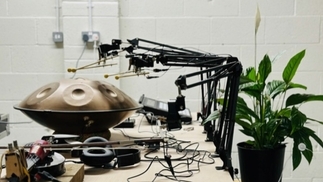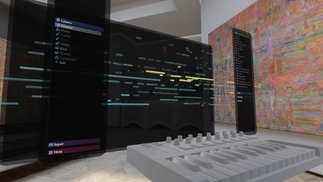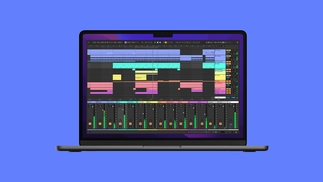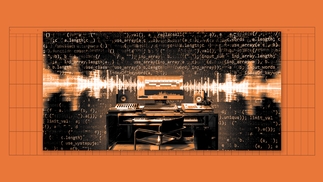REVIEW: ALLEN & HEATH DB2 & DB4
With guest reviewer ThermalBear

Dennis White, aka ThermalBear, is a rare breed of talented producer who not only knows how to make a good record but also knows how to use the tools of the trade to complete the task. He's one of a select few who can actually take apart mixing desks and put them back together again in perfect working order.
His skills behind the desk haven’t gone unnoticed, and he has recently been sharing lots of studio-time with Sasha on his 'Involver 3' album, whilst his recent single 'Love U' on Last Night On Earth was received with rapturous applause. It thus made perfect sense for DJ Mag to approach ThermalBear to conduct our guest review of the new V2 upgrades to Allen & Heath’s DB4 and DB2. Here’s how he got on...
A few years ago I had the misfortune of having to sell my Allen and Heath Xone 62 so that I could afford some IKEA furniture and car tax. I loved that mixer so much; it was sturdy, reliable, sounded fantastic and had this ergonomic and logical layout. Every time I came across a 62/92, I knew I was in safe hands... Imagine my delight, then, when I opened the box to find not one but two Xone mixers for me to play with in the form of the DB2 and DB4 — all complete with the new V2 upgrades. The DB2/4 are so much more than traditional DJ mixers. All the build quality and sturdiness you'd expect from Allen & Heath is on display here, with the key features being instantly recognisable to anyone who's used prior incarnations of a Xone mixer.
GETTING STARTED
The DB4 and DB2 are the new breed of digital mixers from Allen & Heath. Their previous Xone mixers have all been analogue and have had a beautiful warm sound as a result, so how were these two units going to match up? The sound out of these two mixers is utterly outstanding; all the A/D D/A converters sound great. I mean really, really good, which is entirely what I’d expect from a company like Allen & Heath. Clear and punchy transients really come across with crisp detail. Just treating the mixer purely as a stand-alone soundcard, it's exactly what artists would want for their gigs. It's even outperforming my current studio soundcard!

SOUND FORMATION
Traditional EQs are only part of the arsenal of sound mangling that's available to you on the DB2/4. On the DB4 there's a three-pole toggle switch in the EQ section of each channel that lets DJs select either Isolator mode, normal EQ or HP/LP filters with resonance control. The knobs change colour when you select different modes, which is a great way of indicating their functions without eating up precious space on the main screen. The same function is available on the DB2, but is only accessible via the main screen menu rather than a dedicated switch. The DB2 doesn't offer the same visual feedback as the DB4. When this mode is activated, however, whatever selection you make is applied to all four channels, so it's not really required. A&H have gone to extra lengths to create a flexible and powerful mixer, and this attention to detail in the EQ department is only scratching the surface of what each mixer is capable of.
There are some new functions that come with the V2 upgrades which greatly impressed me. DJs now have the ability to set stereo width above and below a crossover point, which can be very useful in controlling how to spread your sonic detail over a venue. For me personally, one of the best functions on these new mixers is being able to phase invert the signal that feeds the 'Booth' output. This is to counteract the cancellation that can happen in venues when acoustic reflections from the 'front of house mix' find their way into the booth. Delay and phasing options have been in play on big digital desks for a while now, and it's great to see it introduced into mixers of this size.
SWEET FX
The FX section is powerful and easy to configure, giving you options for pre/post fade, letting the DJ choose where the EQ sits in the chain, and also the great inclusion of letting users choose between having your chosen effect as an insert ('Classic mode'), as a send, or in 'Hybrid' mode, which is a blend of the two, with the character of the effect changing as you reach the top end of the dry/wet mix. These changes are all new to the V2 versions along with the DB2's specific ability to 'cascade' the FX, allowing for even more processing! 'Cascade' is a fancy term for putting the two FX in series, so that X feeds into Y and any channel assigned to X gets processed by both.
This is a really nice touch and makes the DB2 more powerful in terms of processing than it initially appears.
There is no need for me to go into detail about all the different FX available to DJs. Suffice to say that the mixers come with a lot of power, and that all the effects are what I would deem as suitable for the DJ and live show environment.
An extensive routing matrix allows DJs to record whatever they want via the DB4’s soundcard into their DAW. Another new feature to firmware V2 is the ability to route the Mic/Aux input to any of the four channels so it can be effected and looped. This opens up all kinds of possibilities for creative performance — is there nothing that these mixers can’t do?

IN THE LOOP
Another V2 high point is how the K2 controller now works in conjunction with the DB4 looping section. Connecting the K2 via the 'Xlink' cable lets the user control the four loopers on the DB4, with the faders on the K2 letting you mix between the currently active loop and the track that's running underneath it. It's a very nice expansion of the looping function.
The great thing about these mixers and MIDI control is that almost every switch/rotary on these desks throws out MIDI information over the USB connection, whilst still fulfilling its primary function on the mixer. This may seem a bit overkill to begin with; I mean, why would a DJ need a switch that selects the EQ/filter type to throw out MIDI data? Well, thinking about how it might impact on a live show, it begins to throw up some very cool applications. For instance, you're going to tweak the EQ for the next track, and also want to add some specific effects in your DAW. Switching between the modes allows this to be done easily — one minute you’re controlling the mixer and EQs, the next you’re controlling a function in your software.
Users can have specific MIDI control messages looping in Ableton Live (for instance), controlling parts of the mixer in time with your project while you worry about something else. Or go crazy, set up an LFO that controls your filter frequency, and set the depth or frequency (or both!) to work inversely with a Hi Pass sweep. Real techy stuff, but totally insane!
Both the DB4 & DB2 are avaliable from allen-heath.com
|
VERDICT |
|
| Build quality | 9.0 |
| Ease of use | 8.0 |
| Features | 9.0 |
| Value for money | 8.0 |
| Sound Quality | 10 |
|
HYPE The V2 upgrades are great. I’m so relieved that Allen & Heath have retained their musical EQs and filters, despite stepping into the digital domain. The DB4 and DB2 sounds wicked, I’m using mine as the main studio soundcard! Top work. |
|
|
GRIPE Packing in so many functions always means sacrificing some simplicity when it comes to using these beasts, and it's not waterproof, so I can’t play with it in the bath! |
|
|
You can't treat these new Xone units merely as DJ mixers, they are DAW-friendly soundcards with great routing and FX flexibility — especially with the V2 firmware upgrades. They are equally at home as the hub of a live performance, with external synths and FX, as much as they are with the DJ who only plays vinyl and wants nice-sounding EQs. Everything from the build quality to the logical and easy-to-navigate menus screams attention to detail. Allen & Heath have nailed it. The mixers are stable, have a lot of great functions, but most importantly they look great as well. |
|
| 8.8/10 | |





![Screenshot of [untitled] app interface](/sites/default/files/styles/djm_23_323x182_jpg/public/2023-09/untitled-app-music-new-1400x700.jpg?itok=pro0ZaB4)